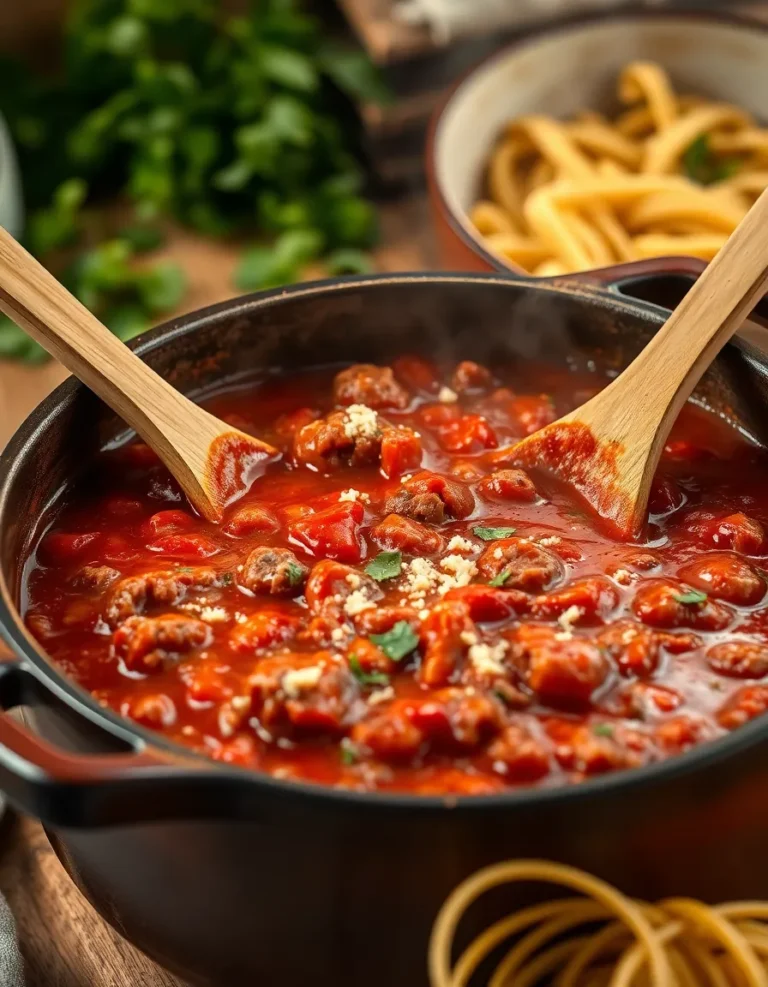Easy Teriyaki Sauce Recipe with 5 Ingredients
Easy Teriyaki Sauce Recipe: Homemade Magic with Just 5 Ingredients
This easy teriyaki sauce recipe is a flavor dynamo, bringing the essence of teriyaki directly to your kitchen. Crafted with just five simple ingredients, it’s the shortcut to bold, Asian-inspired flavors in minutes. Whether you’re enhancing a quick weeknight meal or impressing at your next gathering, this sauce delivers a vibrant blend of sweet and tangy notes that coat every bite in deliciousness.
The best part? This homemade teriyaki sauce is both quick to prepare and incredibly versatile. Think of it as an all-purpose sauce that can transform grilled chicken, beef, or even vegetables into something extraordinary. The right combination of sweetness and umami transforms everyday meals into restaurant-quality experiences. Plus, making it by yourself allows for healthier, fresh, and preservative-free enjoyment.
Quick Recipe Highlights
- Flavor Profile: A perfect balance of sweet and savory notes, with a hint of tanginess that elevates any dish.
- Texture: Smooth, glossy sauce that clings well to meats and vegetables, enhancing every mouthful.
- Aroma: Rich, inviting scent dominated by soy and subtle garlic notes.
- Visual Appeal: Deep, attractive glaze that gives any dish a polished finish.
- Skill Level Needed: Designed for all skill levels, requiring only basic culinary skills like stirring and simmering.
- Special Equipment: A small saucepan and a whisk or spoon is all that’s needed to perfect this sauce.
Recipe Overview
- Difficulty Level: This recipe is classified as easy. It requires minimal cooking skills—just measuring, mixing, and simmering. It’s an excellent beginner recipe that provides confidence in the kitchen.
- Category: Perfect for those looking to create a quick sauce that complements various proteins and vegetables.
- Cuisine: Reflects Japanese culinary traditions but is universally adaptable to different cooking styles.
- Cost: Economical, as it needs only five, readily available pantry staples, making it a budget-friendly option.
- Season: Delightful year-round, this sauce can be used as a marinade or glaze for grilling during summer or baked dishes in winter.
- Occasion: Ideal for casual family dinners, quick lunches, or as a savory addition to party spreads.
Why You’ll Love This Recipe
The taste and texture of this homemade teriyaki sauce are reasons enough to make it a staple. The harmony of soy sauce combined with sweet and savory flavors lingers on your taste buds, bringing a gourmet touch to everyday meals. It pairs wonderfully with rice or noodle dishes and can even act as a dipping sauce for appetizers.
Convenience is another major benefit. In just about 10 minutes, you can whip up this delicious sauce, saving time without compromising on taste. It’s also customizable—adjust the sweetness or saltiness to suit your personal preferences.
Nutritionally, this homemade teriyaki sauce is free from preservatives and high-fructose corn syrup commonly found in store-bought versions. By selecting quality ingredients, you ensure a healthier meal experience for your family.
The social value of this sauce is remarkable. Use it to impress guests at a dinner party or simply elevate your family’s weeknight meals. Its versatility makes it ideal for experimenting with different dishes.
This sauce offers significant cost savings by eliminating the need for expensive pre-packaged alternatives. With just a handful of ingredients, you create an Asian-inspired masterpiece that can adapt to many dietary preferences, from gluten-free to vegan.
Historical Background and Cultural Significance
Teriyaki sauce traces its roots back to Japan, where it is cherished for its ability to enhance the natural flavors of ingredients while imparting a shiny glaze. The term ‘teriyaki’ itself refers to the cooking technique where foods are broiled or grilled with a sweet soy glaze, a practice that has been refined over centuries.
In Japan, teriyaki evolved as a popular cooking method, blending traditional soy sauce with local ingredients such as mirin and sake, creating a distinctively sweet and umami-rich sauce. It soon crossed the sea, gaining popularity in Western cuisines for its ability to harmonize with diverse flavors.
As the recipe traveled, it underwent various adaptations, incorporating local tastes and ingredients. In the Americas, for instance, pineapple or ginger is sometimes included for an extra flavor dimension.
Today, teriyaki remains a staple both in Japan and globally, celebrated for its fortifying umami flavors and versatile nature. While it traditionally graces grilled fish, modern interpretations embrace everything from chicken and tofu to burgers and more.
Ingredient Deep Dive
Soy Sauce is the heart of teriyaki sauce, lending its umami depth and serious richness. It has been a cornerstone of Asian cuisine for centuries, revered for its ability to enhance flavors. Choosing a low-sodium soy sauce can help control salt levels and keep the dish balanced.
Brown Sugar serves as the sweet component that balances the salty soy sauce. Opt for golden brown sugar to retain moisture and add a subtle molasses note, providing a richer caramelization. For an alternative, honey or maple syrup can be easily substituted.
Garlic infuses the sauce with a pungent, aromatic profile. Fresh garlic cloves are preferred over powder for a more authentic taste. Be sure to mince them finely to release maximum flavor.
Ginger is another traditional aromatic that adds warmth and complex flavor. It not only imparts a spicy kick but also pairs wonderfully with the other ingredients. Fresh ginger root works best, but pre-minced ginger can save time without sacrificing too much flavor.
Cornstarch acts as a thickening agent, allowing the sauce to cling to the desired dish. Mix it with water to create a slurry before adding to the sauce, ensuring a smooth, lump-free texture. Tapioca starch can serve as a gluten-free alternative.
Common Mistakes to Avoid
- Overcooking the sauce: Can lead to a burnt flavor. Simmer gently and watch closely.
- Not dissolving cornstarch properly: Results in lumps. Mix it with cold water before adding.
- Using high-sodium soy sauce: Overpowers the sauce. Opt for low-sodium or dilute with water.
- Neglecting to taste the sauce: Always taste and adjust sweetness or saltiness to your preference.
- Ignoring ingredient freshness: Fresh ginger and garlic yield the best flavors.
- Rushing the caramelization process: Be patient to develop complex flavors.
- Forgetting to cool the sauce: Cooling helps thicken it properly.
- Improper storage: Can lead to spoilage. Store in an airtight container in the fridge.
Essential Techniques
Simmering is crucial for developing the flavors in your teriyaki sauce. This gentle cooking method helps meld the sweet, salty, and umami elements together, forming a harmonious blend without burning.
Caramelization of the sugars deepens the sauce’s flavor profile and creates a glossy appearance. Patiently allowing the sauce to thicken as it heats ensures that the sugars develop a complex, almost toffee-like aroma.
Careful measurement is key to this recipe’s success. Balancing each component according to taste is a must—the soy provides saltiness, the sugar adds sweetness, and the other ingredients add depth.
Pro Tips for Perfect Easy Teriyaki Sauce
For enhanced depth, allow the sauce to simmer on low heat, stirring occasionally to ensure even thickening and prevent burning.
If you prefer a thicker consistency for your teriyaki sauce, add a touch more cornstarch slurry. Adjust gradually to avoid an overly thick sauce.
To infuse extra flavor, consider adding a splash of rice vinegar at the end. It introduces a touch of acidity that can brighten the sauce.
Creating a marinade version? Incorporate extra beer or sake for a more robust base, perfect for meats that need a deeper infusion of flavors.
After preparing, let your sauce rest for a few minutes before serving. It allows flavors to meld further and thickens slightly as it cools.
Initiate a quick taste test before fully cooking the sauce. This step lets you tweak sweetness, saltiness, or other flavors to your ideal taste.
For a subtle smoky touch, add a pinch of smoked paprika or a splash of liquid smoke just before serving. It enhances the depth without overpowering the base flavors.
Variations and Adaptations
For a regional twist on teriyaki sauce, consider adding tropical fruits like pineapple into the cooking process which adds sweetness and complexity.
In fall, try incorporating apple cider instead of water. The seasonal drink pairs beautifully with ginger and garlic, giving a comforting warmth to the sauce.
For a dietary modification, the sauce can be made gluten-free by substituting tamari for soy sauce, offering the same depth of flavor without gluten content.
Looking for a flavor twist? Incorporating finely chopped fresh chili peppers provides a pleasant kick, ideal for those who enjoy a bit of spice.
To enhance the texture of the sauce when finished, run it through a sieve for an ultra-smooth finish that delivers an exquisite mouthfeel.
Experiment with a presentation alternative by drizzling the sauce over roasted vegetables or grain bowls, visually elevating the dish and letting the sauce shine.
Serving and Presentation Guide
When it comes to plating your dish topped with teriyaki sauce, consider the color contrast between main components to highlight the glossy sauce.
Garnishing with toasted sesame seeds and chopped green onions offers an elegant finish while adding delightful texture.
Traditional accompaniments like steamed rice or soba noodles provide a neutral backdrop that lets the highlight of the sauce shine through.
For modern serving suggestions, consider using the sauce as a dip for spring rolls or potstickers, allowing it to complement other bold flavors.
The best temperature for serving the sauce is warm; too hot and it might thin out, too cold and it could be overly thick.
Portion control helps maintain balance—the sauce is meant to enhance, not overpower the dish it’s served with.
Wine and Beverage Pairing
Sauvignon Blanc offers an excellent pairing with teriyaki sauce, as its acidity and citrus notes complement the sauce’s sweet and savory profile.
For a non-alcoholic alternative, a chilled green tea or a ginger-infused water provides a refreshing counterpart to the sauce’s richness.
Coffee may seem unconventional, but a mild roast with chocolate undertones can accompany a teriyaki-based meal nicely.
Maintain room temperature for whites like chardonnay if choosing wine, or slightly chill fruit-infused beverages for refreshing contrast.
Serve beverages in appropriate glassware, ensuring an elevated dining experience. A stemless wine glass can lend a more relaxed vibe if desired.
Storage and Shelf Life
Store homemade teriyaki sauce in a clean, airtight container to preserve its flavor and prevent contamination. Glass jars with secure lids work best.
Keep the sauce refrigerated when not in use; its shelf life is approximately two weeks due to its clean ingredients and lack of preservatives.
If freezing, divide the sauce into smaller portions using an ice cube tray, making it easy to defrost only what you need.
Beware of spoilage markers like a sour smell or mold growth, indicating that the sauce should be discarded.
To reheat, gently warm in a saucepan over low heat, stirring continuously to restore its original texture.
Follow freezing guidelines to maintain quality by using sealed freezer bags, ensuring that all air is expelled before sealing.
Make Ahead Strategies
Consider batching the sauce over the weekend to use during the busy week ahead. This approach clears up prep time on meals involving teriyaki sauce.
If preparing alongside meals, store sauce components separately until ready to cook to maintain the freshest flavors.
Understand that while quality might slightly differ between fresh and stored sauces, the convenience advantage often far outweighs this minor factor.
Plan for assembly at dish time by warming the sauce first for an even texture and consistent coating.
Reheat gently, either in a microwave-safe dish or on the stovetop, watchful of over-thickening or burning.
Adding fresh elements like sliced scallions or sesames right before serving rejuvenates the sauce.
Scaling Instructions
Halve the recipe easily by using smaller equipment, a smaller saucepan for the reduced quantity without risking evaporation and burning.
Doubling or tripling calls for using a wider pan, promoting even cooking and avoiding uneven thickening or burning.
Adjust timing as required, understanding that larger quantities might take longer to reduce down to the perfect glossy syrup stage.
Take extra care when storing large batches to prevent spoilage, using sanitized jars or air-tight containers to maintain freshness.
Balance each component carefully when scaling, constantly tasting and adjusting sweetness, tang, and saltiness to suit your desired flavor profile.
Nutritional Deep Dive
This teriyaki sauce offers a modest calorie count, primarily from sugars and some sodium content. Those seeking a lower-sugar diet can reduce the sweetness.
Rich in sodium, it’s important to moderate the use of soy sauce and opt for ideally low-sodium brands to manage intake.
Its relatively simple carb structure (from sugar) means portion moderation is effective for those monitoring carbohydrate intake.
Though lacking in fiber, it pairs excellently with whole grain dishes to boost dietary fiber levels.
Serving sizes should respect recommended daily limits for sugar and salt, particularly for individuals adhering to specific dietary recommendations.
Despite its subtle calorie content, successfully partnering with nutrient-dense vegetables or lean proteins can create balanced meals.
Dietary Adaptations
For gluten-free adaptations, swap regular soy sauce with tamari or a gluten-free equivalent to maintain similar flavor balance.
The sauce can be transformed into a dairy-free version by keeping current ingredient lists, as no dairy components are present initially.
Creating a vegan version requires no modifications as the existing five ingredients align seamlessly with vegan dietary restrictions.
Low-carb adaptions can modify sweeteners used—consider a stevia or erythritol blend for sweetness without loss of flavor depth.
On a ketogenic diet, the sauce’s richness harmonizes well with fatty cuts of meat, introducing carbs only in minimal batches needed.
For paleo diets, substitute cane sugar alternatives like honey instead of refined sugars, maintaining the tincture’s integrity.
Adjustments for low-FODMAP diets might reduce garlic content slightly when necessary, balancing taste with digestibility.
The Recipe
Easy Teriyaki Sauce
Serves: 4
Prep Time: 5 mins
Cook Time: 5 mins
Total Time: 10 mins
Kitchen Equipment Needed
- Small saucepan
- Whisk or spoon
- Measuring cups and spoons
- Knife and cutting board
Ingredients
- 1/2 cup low-sodium soy sauce
- 1/4 cup brown sugar
- 2 cloves garlic, minced
- 1 teaspoon grated fresh ginger
- 2 teaspoons cornstarch mixed with 2 tablespoons water
Directions
- In a small saucepan, combine soy sauce, brown sugar, garlic, and ginger over medium heat. Stir to dissolve the sugar.
- Once the mixture begins to simmer, add the cornstarch slurry, continue stirring to avoid lumps, and bring to a gentle boil.
- Reduce heat and simmer for about 1 minute, until the sauce thickens to your desired consistency.
- Remove from heat and let cool slightly before using. The sauce will thicken further as it cools.
- Store in a glass jar in the refrigerator for up to two weeks.
Recipe Notes
- Adjust sweetness with additional brown sugar or replace with honey for a natural alternative.
- Add a touch more cornstarch for a thicker sauce, especially if using it as a glaze.
- For extra flavor complexity, consider stirring in a dash of roasted sesame oil just before serving.
Troubleshooting Guide
The consistency might not meet your expectations due to incorrect cornstarch ratios—incrementally adjust when needed. Should flavors overpower one another, balance flavors with extra soy sauce or sweetness as desired. Keep sauce temperate even if it thickens too much, adjust texture by gently reheating over a low burner. Equipment issues might arise if pan sizes are mismatched to sauce amount—use appropriate sizes. Substitute challenges have solutions in alternatives like tamari or stevia—and as always, pacing can mitigate rushed steps that impair quality, so follow timing guides closely.
Recipe Success Stories
Community response has been overwhelmingly positive. People express excitement over creating their favorite takeout flavors at home. Variations like adding a splash of sake have yielded unexpectedly delicious results. Creativity shines in adaptations for keto and vegan variations, support growing on each trial. Suggestions like honey substitution made steady waves, while photography tips uplifted all users aiming for perfection.
Frequently Asked Questions
Q: Can I use powder ginger instead of fresh?
A: Yes, ginger powder can substitute fresh ginger at approximately a quarter teaspoon, though taste nuances may differ; adjust to preference.
Q: How often should I stir the sauce?
A: Stir frequently to prevent sugar settings sticking or burning at saucepan bases, ensuring a smooth sauce.
Q: Can I refrigerate the sauce without losing quality?
A: Yes, store in an airtight container for up to two weeks; it’s best reheated gently for optimal texture.
Q: Are there healthy alternatives to cornstarch?
A: Tapioca starch or arrowroot make excellent replacements; the mixture’s texture or flavor remain uncompromised when switching.
Q: How can I lower sodium content?
A: Use low-sodium soy sauce, which balances flavors or dilutes standard versions slightly with water for gentler salt levels.
Q: Can I double this recipe easily?
A: Yes, simply multiply ingredients accordingly remembering to taste test and adjust balance during and post-cooking.
Q: Can I freeze excess sauce?
A: Freeze in portions to avoid waste, using ice cube trays allows flexible defrosting, maintaining freshness and taste.
Q: Will the sauce separate over time?
A: Proper mixing and storing maintain stability, repeated heating without agitation might cause minor separation—easily resolved by stirring.
Q: How does this sauce pair with fish?
A: Teriyaki sauce naturally complements many fish types, with its sweet-savory balance enhancing each bite—perfect for grilling or broiling.
Q: Does cooking time differ by altitude?
A: Elevation influences boiling points, requiring attention under higher heights, but adjustments rarely exceed seconds per aspect.
Additional Resources
Looking for more inspiration or recipes related to teriyaki? Consider exploring our marinade collection—our expansive library guarantees creative meal variations. Our technique guides reveal deeper insights on achieving perfect flavor fusions. Ingredient information covers soy intricacies, from production to preparation, broadening your understanding of this essential component. Equipment recommendations match global standards, recommended setups ensuring you’ll be properly equipped for culinary success. Seasonal variations stimulate familiarity with spring, summer, and fall influences on moods and menus, linking family traditions directly into flavorful explorations.
Join the Conversation
Share your homemade teriyaki creations through social media, tagging us for a chance to feature your photography. We encourage readers to review the recipe, gauge effectiveness, and provide constructive input for future improvement. Engage with others exploring teriyaki sauce—discover novel preparation methods, quirky adaptations, and inspirational blends. Involved interaction spurs discovery, creating spaces that foster camaraderie around exquisite culinary vibes—a bond strengthened through varied tastes, unified by unyielding passion.







